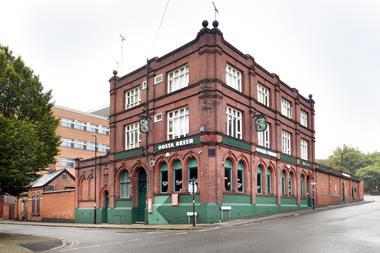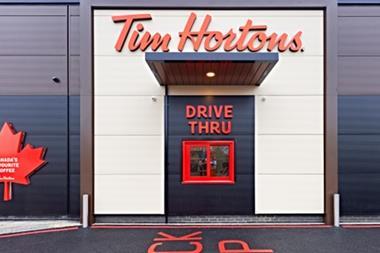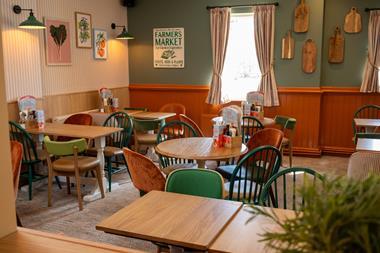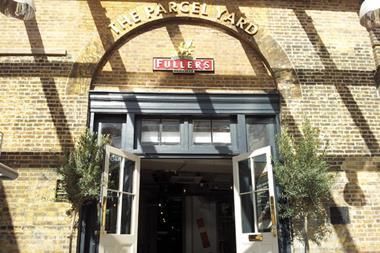Against a positive backdrop of economic stability, growing demand for eating out options and increasing interest from investors, why aren’t sector like-for-likes keeping pace. Peter Hansen, founder of Sapient Corporate Finance gives his view.
There’s no doubt that economic conditions for the sector are as benign at the moment as they have been since the financial crisis, with low inflation, strong increases in disposable income and much reduced levels of unemployment. Against this backdrop, there has been a sustained recovery in the value of assets as investors are drawn back in by the fundamentals strengths of the sector – growing demand for eating out and, in the case of pub assets, the attraction of cashflow and property-backed investment. There remains one cloud on the horizon. Why aren’t sector like-for-likes growing more quickly given that the country is basking in the sunny uplands of economic recovery? It’s an issue I will return to.
But first it’s worth noting the extent of the recovery in the mergers and acquisitions market. The Initial Public Offering market has re-opened with Revolution, SSP and Patisserie Holdings all successfully listing. The banks have mostly taken advantage of improved market conditions to off-load the assets that ended up on their balance sheets.
Since 2000, our firm has completed 62 transactions on behalf of clients for £5.6bn across both tenanted and managed pubs. Of these, 36 have been completed for £2.0bn since 2009. In our experience over the last 15 years, managed pub multiples are closer to those we saw between 2000 and 2005 and tenanted multiples have largely recovered since the bottom of the market in 2012. Interest in the tenanted market has been buoyed by a recovery in trading, with volume declining by 2-3% per annum, closer to historical averages. Star Pubs and Bars is proving that volume increases in a tenanted estate are possible given the right level of capital investment.
The managed community pub operator Amber Taverns has been bought and sold within the past few years and its sale multiple strengthened by “one turn” over the period. In November 2010, my company sold Mitchells & Butlers’ wet-led estate to TDR Capital for a little over six times outlet EBITDA and by comparison, last year, we sold Orchid to Mitchells & Butlers for 9.7 times outlet EBITDA. Direct lenders, such as Macquarie, BAWAG and Ares are active in the market and the bond market is open to the sector and offering attractive pricing. We are aware of several US real estate hedge funds looking to make their first sector investment. The one fly in the ointment is the continued reluctance of many of the clearing banks to return to normal levels of sector lending. Companies with very strong balance sheets, those which don’t really need the money, can access bank lending. But the banks are still under pressure to reduce their balance sheets and most borrowers will find banks offering senior debt at 60 to 65% of valuation, well below 75% a decade ago.
And lastly, private equity interest in the sector, particularly casual dining, is running at very high levels with a host of familiar and new investors keen to place bets on unprecedented numbers of emerging brands. This is a sector that still offers 30% plus annual ROI for canny private equity investors.
Against this generally positive backdrop, stress points are beginning to emerge. I mentioned earlier that trading is generally lacklustre with like-for-like sales growth, running, according to the Coffer Peach Tracker, at a modest two to three per cent. Demand for eating and drinking out is in growth but is being outstripped by supply with, according to CGA, 2,000 more restaurants opening last year alone.
Barriers to entry are low in town centres with most planners happy to approve new restaurants. Changes in the retail industry, poor town planning policies and the rise of Amazon has driven many retailers to the wall, creating empty units in many town centres. Landlords are happy to welcome casual operators to their properties. These are the seeds of future over capacity.
The current over-heated dining market in London reminds me of the rapid expansion of high street bars 20 years ago. There was a similar level of capital over-investment and proliferation of brands. A host of weaker brands, such as SFI’s Litten Tree and Eldridge Pope’s Toad, became the casualties of an over-heated marketplace. A number of these chains went into administration (e.g. Regent Inns). The town centre bar market is still struggling today with excess capacity and too many companies, 15 years after the peak.
The next few years will produce a shake-out among the weaker brands in the casual dining market, especially as inflationary rent reviews and rising rates ratchet up fixed costs. Which of today’s casual dining brands are future Litten Tree’s, unlikely to survive?
There are already signs of margin pressure in the value-food pub market. Brands such as Greene King’s Hungry Horse, JD Wetherspoon and Mitchells & Butlers’ Crown Carveries are in direct competition with the supermarkets, looking to attract value-conscious consumers. Margins are thin in this part of the market and like-for-like sales growth, or even defending current sales levels, can be difficult. The current focus on growing breakfast sales may well achieve nominal sales growth, but this is low margin business and may even damage margins further. But what other options are there in a part of the market when growth is very difficult later in the trading day?
Political intervention to create the Market Rent Option will produce a host of opportunities and challenges in the tenanted market. Tenanted companies such as Enterprise Inns have already signalled unprecedented change in the way they operate. We will see more pubs with operator agreements, similar to what Amber has popularised, more disposals and the death of the tied, long lease. Enterprise’s objective is to build a both sizeable managed estate and an estate with operator agreements, which could well provide more opportunity for the entrepreneurial smaller multi-site pub operators to enter partnerships with the company – or obtain long leases on terms in line with commercial leases.
For the tenant, there will be fewer opportunities to build a business over a long period. A lucky few will go free of the tie although that may not last beyond the end of their agreement. And a lessee who wants to assign their lease may face uncertainty about what will happen at the end of the lease. As ever with political intervention, unforeseen consequences are likely to hurt as many tenants as it helps.




































